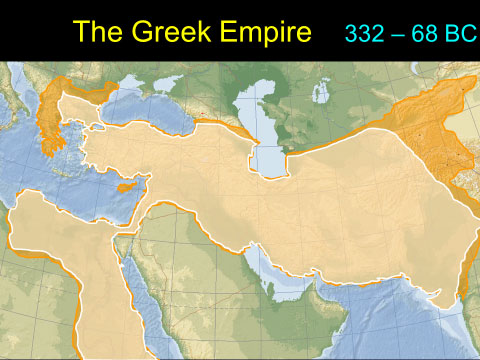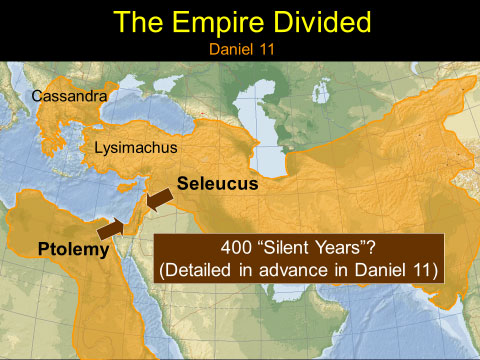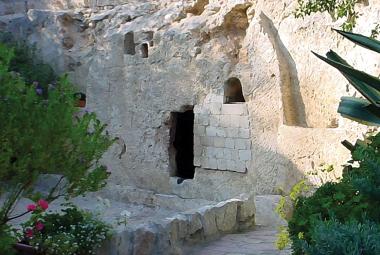In order to understand the timing of the birth of Christ, we need some political understanding of the empires as well as the geopolitical landscape of that time. The world’s first dictator, Nimrod, built the city of Babylon. The Babylonian Empire rose to power about 606 B.C. The city of Babylon became an empire under the leadership of Nabopolassar’s son, a very bright general in his own right, Nebuchadnezzar. Nebuchadnezzar established the Babylonian empire which was eventually absorbed by the Persian Empire when Cyrus the Persian conquered it in 539 B.C. When Cyrus conquered the Babylonians, he was so impressed by the letter Daniel showed him1 that he encouraged the Jews to return to their land and rebuild their Temple. This return to the land is recorded in the Book of Ezra. The Persian Empire lasted from 539 B.C. to 332 B.C.
Within the Persian Empire there was a group called the Magi.
The word Magi is a Latinized form of Magoi, an ancient Greek transliteration of the original Persian word. Much of our information about the Magi comes from Herodotus, often called The Father of History.2 As one studies the Magi in Herodotus, their key skill was not astrology, it was dream interpretation (oneiromancy).
- Note how similar the Magi were, originally, to the Jewish forms of worship:
— Monotheistic concept of one beneficent creator
— Creator is all-good
— Creator is opposed by all that is evil (malevolent evil spirit)
— Hereditary priesthood:
Jews had Levites;
Persians had Magi (therefore, Rab-mag)
— One mediator between God and man
— Made atonement by blood sacrifice
— Same essential concept of clean and unclean
— Depended on divination (wisdom) from the priesthood:
Levites had Urim and Thummim;
Magi had Barsoms (small bundles of divining rods.)
In the Medo-Persian world, Darius the Great (522 B.C. – 486 B.C.) recognized that the Magi were very, very skilled at dream interpretation. As such, they were attached to the court and they eventually became the king-makers. They are given an interesting title in Jeremiah 39:3,13—Rab-mag (the untranslated title of Nergalsharezer, who was the chief of the Magi in Nebuchadnezzar’s court).
The Magi were a hereditary priesthood among the Medes. Darius, the King of the Medes, put Daniel (a former Jewish captive) in charge of this hereditary priesthood and bestowed on him the title of Governor (one of three appointed in Daniel 6:2) because Daniel had gained favor with him. One can only imagine how that was received by the “hereditary priesthood.” This event, as well as Daniel’s refusal to stop praying to his God is probably what led to the plot against Daniel that resulted in the lion’s den incident in Daniel 6: 7-28.
As one continues through the history of Persia, one discovers there is a real synergism between Persia and Israel. In fact, in the great Archaemenid days (the first Persian Empire), some of the Persian kings were apparently of Jewish blood.
So, since the days of Daniel, the fortunes of Persia and the Jewish nation are intertwined. They both had their turn falling under the Seleucid Empire in the wake of Alexander’s conquests. The Seleucid Empire was a remnant of the Greek Empire. Also, they both were able to get free: the Jews under the Maccabean leadership, and the Persians as the dominating group within the Parthian Empire.
The major rival of Rome to the east was the Parthian Empire. The Parthians had a Council of the Magistanes (which could be the origin of the term magistrate). The upper house of that council was composed of men who also held the top governmental offices in the empire. This dual capacity of priest and counselor (magistrate) is where the civil, political, and religious roles became connected in the Persian environment. They became the supreme priestly caste of the Persian Empire—the Magi. Their duties included absolute choice of the king of the realm, and that will impact Herod’s reaction when they arrive, seeking “he that is born, King of the Jews”
The Rosetta Stone (a stone block small enough for one to handle) had a vital role in unraveling the Egyptian hieroglyphics. There is another inscription that has essentially the same role: the inscription on Behistun. This is a huge wall, like a billboard, and it was commissioned by Darius the Great. Everything inscribed on it is in three languages: Elamite, Addadian/Babylonian, and the Old Persian or Aramaic. Due to the discovery of that huge wall, we can learn about those languages, and it is the link by which we can translate other languages. The Behistun also speaks of a particular event that has to do with a speedy and final triumph by Darius over a revolt of Magi in 522 B.C.
Alexander the Great
In 331 B.C., Alexander the Great conquered the Persians and made Babylon his capital. He did not destroy Babylon, as many books would suggest. He did however, promote Greek, which is the most precise of languages, as an international standard throughout the region.

After the Persian Empire came the Greek Empire under Alexander the Great, and when Alexander died, four of his generals divided the Empire: Cassandra took the far west, Lysimachus took that area we know as Turkey, Seleucus took the east, and Ptolemy’s area was to the south. In time, the two major players were Seleucus and Ptolemy. The map makes it easy to see how that little strip of Israel became a buffer state.
It is the subsequent struggles between these two dynasties that populate the bulk of Daniel 11. Interestingly enough, Daniel 11:5-35 also writes about the so-called “silent years” between the Old and New Testament. His writings about these years are so precise that some critics have said it had to be written later because it really chronicles, in effect, the struggles between Ptolemy’s and Seleucus’ relative dynasties.
Finally, the Roman Empire (68 B.C.-476 A.D.) succeeded the Greek empire, and the Roman infrastructure was established, which was eventually used for the promotion of the Gospel. The Romans established a common language, Latin, as well as the Roman system of roads, Roman laws, and a unified monetary system.

The Roman Empire consisted of two legs, and the eastern leg outlasted the western leg by a thousand years. While Rome was making its mark, the remnants of the Persian Empire, the Parthian Empire, was in its heyday (ca. 250 B.C. to 224 B.C.). The zone that we think of as the Fertile Crescent was really a buffer between the vicissitudes of both empires, Rome and Parthia. The Parthians had succeeded in founding an independent kingdom and during the first century B.C., it grew into an empire extending from the Euphrates River all the way to the Indus River and from the Oxus (now Amu Darya) River to the Indian Ocean.
Parthia, an ancient empire of Asia, was in what are present-day Iran and Afghanistan. The Parthians were of Scythian descent, and they adopted Median dress and Aryan speech. They were subject successively to the Assyrians, Medes, Persians, and Macedonians under Alexander the Great, and then to the Seleucids. In 224 A.D. Parthia was conquered by Ardashir I, King of Persia and founder of the Sassanid dynasty.
The Roman Empire and the Parthians
However, after the middle of the first century B.C., Parthia was a rival of Rome, and several wars occurred between the two powers. Judea is a buffer zone. Parthia had several major successes against Rome when these two powers clashed.
Pompey, the first Roman conqueror of Jerusalem in 63 B.C., attacked the Armenian outpost of Parthia—the western edge of this emerging empire. In 55 B.C., Crassus led the Roman legions in sacking Jerusalem and a subsequent attack on Parthia proper. However, the Romans were decisively defeated at the Battle of Carrhae (53 B.C.), with the loss of 20,000 troops, including their commander.3 The Parthians counter-attacked with a token invasion of Armenia, Syria, and Palestine. In effect, this places Judea under the Parthian thumb for a while.
Nominal Roman rule was reestablished under Antipater, the father of Herod (who later became King Herod) and yet he had to retreat before a Parthian invasion in 40 B.C. Then Mark Anthony re-established Roman sovereignty in 37 B.C., but like Crassus before him, he embarked on a similarly ill-fated Parthian expedition. His disastrous retreat was followed by another wave of invading Parthians. The Parthian forces swept all Roman opposition completely out of Palestine (including Herod himself who had to flee to Alexandria and then to Rome). With Parthian collaboration, Jewish sovereignty was restored, and Jerusalem was fortified with a Jewish garrison. Palestine was Parthian, not Roman. Rome would claim it, and Herod would finally succeed in receiving the title King of the Jews from the head of the Roman Empire, but for three years, including a five-month siege by Roman troops, King Herod was unable to occupy his own capital city.
Herod had gained the throne of a rebellious buffer-state situated between two mighty, contending empires. He knew that at any time his own subjects might conspire against him and bring the Parthians to their aid. Remember, Herod was not Jewish; he was Idumean, an Edomite, an enemy of the Jews. At the time of the birth of Christ, Herod may have been close to his final illness.
Meanwhile, in Rome, Emperor Augustus was very old by now. Rome, since the retirement of Tiberius, was without any experienced military commander; a fact that made them concerned about the outlying districts. In addition, pro-Parthian Armenia was fomenting a revolt against Rome, which was successfully accomplished within two years.
Parthia was very powerful, but it had its own problems internally. It was ripe for another invasion to the buffer provinces, except it was racked with internal contention. Phraates IV was a very unpopular and aging king. He had been deposed once before, so it was not improbable that the Persian Magi were already involved in the political maneuvering requisite to choosing his successor. Remember, the Magi had a dual priestly and governmental office; they are essentially like the senior senate of Persia.
The Visit of the Magi
It was a group of Persian-Parthian king-makers4 who entered Jerusalem in the latter days of the reign of Herod. It was conceivable that the Magi could have taken advantage of the king’s lack of popularity to further their own interests with the establishment of a new dynasty, if a sufficiently strong contender could be found.5 This was a very precarious visit for all concerned. And this was not just three guys on camels. These Magi were king-makers. They were accompanied by a major military force, probably a cavalry escort of 1,000 men to insure their safe penetration into Roman territory, and with unimaginable oriental pomp. Scripture records the reaction to their arrival:
Now when Jesus was born in Bethlehem of Judaea in the days of Herod the king, behold, there came wise men from the east to Jerusalem, Saying, Where is he that is born King of the Jews? for we have seen his star in the east, and are come to worship him. When Herod the king had heard these things, he was troubled, and all Jerusalem with him.
Matthew 2:1-3
The whole city of Jerusalem wouldn’t be upset about three guys on camels; no, this is a major Parthian group, or entourage, that has arrived, and Herod is nervous. Herod was not really seen as King of the Jews. He was appointed by Rome, and he was also Idumaean. His reaction was understandably one of fear when one considers the background of Roman-Parthian rivalry that prevailed during his lifetime. Their request of Herod, regarding the one “who has been born king of the Jews,” was a calculated insult to him because he was someone who had contrived and bribed his way into that office. Herod was paranoid, and that was why he built fortresses like Masada, the Herodian, and ten others. He was troubled because he recognized there was an implied threat in their words.
The first question in the New Testament is, “Where is he that is born King of the Jews?” (Matthew 2:2). The first question by God in the Old Testament is when He called to Adam, “Where art thou?” (Genesis 3:9)
The first question in the Old Testament deals with the first Adam; the first question in
the New Testament deals with the last Adam.6
And when he had gathered all the chief priests and scribes of the people together, he demanded of them where Christ should be born. And they said unto him, In Bethlehem of Judaea: for thus it is written by the prophet, And thou Bethlehem, in the land of Juda, art not the least among the princes of Juda: for out of thee shall come a Governor, that shall rule my people Israel.
Matthew 2:4-6
Matthew is quoting Micah 5:2, which we so often see on Christmas cards:
But thou, Bethlehem Ephratah, though thou be little among the thousands of Judah, yet out of thee shall he come forth unto me that is to be ruler in Israel; whose goings forth have been from of old, from everlasting.
Micah 5:2
This is the pre-eminent One that is going to be born as a man.
We notice that there are two kinds of people found in Matthew 2, those with hatred and those paying homage! The entire world falls into one of these two categories. Also, note that the Magi were Gentiles, not Jews.
Then Herod, when he had privily called the wise men, enquired of them diligently what time the star appeared. And he sent them to Bethlehem, and said, Go and search diligently for the young child; and when ye have found him, bring me word again, that I may come and worship him also. When they had heard the king, they departed; and, lo, the star, which they saw in the east, went before them, till it came and stood over where the young child was. When they saw the star, they rejoiced with exceeding great joy.
Matthew 2:7-10
The Magi knew about astronomy, but they were looking for something unique, something special, and something which had been prophesied, probably by Daniel. They also knew that He was King of the Jews!
And when they were come into the house, they saw the young child with Mary his mother, and fell down, and worshipped him: and when they had opened their treasures, they presented unto him gifts; gold, and frankincense, and myrrh.
Matthew 2:11
Notice that they are in a house now, and no longer in a stable. This could be a year or more later. Because there are three gifts, most people jump to the conclusion there were three guys. No, it could have been twenty guys or two guys, and there may have been other gifts. However, we do know that there were at least three gifts, and those three are mentioned because they are prophetic.
— Gold speaks of His deity.
— Frankincense was an incense used for priestly duties.7
— Myrrh, when crushed, was an ointment for burial.
These gifts speak of His roles as well: King, Priest, and Prophet. In the Millennium, Isaiah 60:6 tell us that He will be given gifts: gold and frankincense (but no myrrh because His death is behind Him.)
And being warned of God in a dream that they should not return to Herod, they departed into their own country another way.
Matthew 2:12
It is important to catch the mention of “a dream” and remember that the Magi were known for their ability to interpret dreams (oneiromancy). God communicated with them in a manner with which they were most comfortable.
Traditions and the Magi
We have looked at what the Scripture says about the birth of Christ, and we have a little bit of a perspective of the geopolitical environment. Now we need to see the incredible traditions that have risen around these Magi.
Numbers and Names
In the Eastern Church, there weren’t three, there were twelve Magi, and Christmas is twelve days in length. Their Christmas is January 6, not December 25, but that is just an Eastern Orthodox tradition.
In about the third century, these wise men suddenly become “kings” bearing gifts. This concept probably comes, in part, because of two psalms, although the psalmist was probably referring to the Millennium.
Because of thy temple at Jerusalem shall kings bring presents unto thee.
Psalm 68:29
The kings of Tarshish and of the isles shall bring presents: the kings of Sheba and Seba shall offer gifts.
Psalm 72:10
Relics attributed to the Magi were discovered in the fourth century; transferred from Constantinople to Milan in the fifth century, and shipped to Cologne by Frederick Barbarossa in 1162 where they remain enshrined.
The Western tradition, having been influenced by the Reformation and the Medieval Church, places the number of gifts of the Magi at three because of the three Wise Men. And we place Christmas on December 25 for the reasons cited earlier. Some churches, especially Eastern Orthodox, celebrate Epiphany on January 6 and that is twelve days after the birth of Christ, and traditionally when the Wise Men first saw the Christ child, the King of the Jews. Additionally, the Eastern Orthodox tradition will have twelve Magi coming to worship the King of the Jews, Jesus Christ.
In the sixth century, a chronicle, Exerpia Latina Garbari, was written and gave the three Wise Men names:
Balthasar (Bithisarea)
Melchoir (Melichior)
Gaspar (Gathaspa)
What derives from this are the three names often used in literature, such as in Ben Hur.8 During the seventh century, these three became representative of Asia, Africa, and Europe by representing the three sons of Noah: Shem, Ham, and Japheth.9 Of course, this ignores the fact that all “three” wise men were Medes, that is, Gentiles. In the fourteenth century, the Armenians added a slight twist to all of this:
Balthasar was King of Arabia
Melchior was King of Persia
Gaspar was King of India
The Star
Another crucial element surrounding the birth and early life of Christ is the Star. When you go to a planetarium show, especially around Christmas time, they almost always have a program describing various conjunctions and eclipses, and numerous attempts to speculate about the Star of Bethlehem. Some try to tie the Star with Balaam’s prophecy. Balaam’s prophecy in Numbers 24:17 says there will be a star out of Jacob, but it is interesting that Matthew did not quote that prophecy. There is also Isaiah 60:3 that speaks of “the brightness of your rising.”
Astronomers have proposed several theories involving conjunctions. It was Kepler who first suggested the conjunction of Jupiter and Saturn in the constellation of Pisces, which occurred in 7 B.C. This is probably the most popular explanation, but one of the problems with that theory is that the conjunction is about five years too soon.
Those who hold such theories miss the main point—this is not a natural phenomenon. If the star could be proven to be a natural phenomenon, that would destroy its significance. It is significant because it was supernatural. It led them, it moved, and it settled over the spot they had to find.
I suspect something that I have never seen in a commentary.10
My conjecture is that the Star of Bethlehem was the Shekinah Glory: the observable light that emanates from the manifested presence of God the Holy Spirit in His visible form. This material presence was recorded at the following:
The Creation, it brooded over the waters (Genesis 1)
The Abrahamic Covenant, it passed through the split offering (Genesis 25)
The Burning Bush (Exodus 3)
The Pillar of fire by night and the Cloud by day (Exodus 13)
The flames at Pentecost (Acts 2)
So, why wouldn’t the same Glory appear here with the Wise Men? Would this not be the same thing? The star was announcing and designating the Messiah. You wonder, what caused the Star of Bethlehem? It was the Holy Spirit in a visible form.
This was an excerpt from Chuck Missler’s book The Christmas Story: What Really Happened.
https://store.khouse.org
Notes:
1 See Isaiah 45 for the letter that Cyrus read. A letter that was addressed to him by name.
2 Herodotus, 1:101. Herodotus was a Greek historian, born at Halicarnassus in Asia Minor (Turkey) in ca.484 B.C. He was born a Persian subject, but immigrated to Greece at a young age.
3 Crassus marched into Parthia with seven legions, nearly four thousand horsemen and as many light-armed troops. Twenty thousand were said to have died and ten thousand taken prisoner. It was the worst Roman defeat since the disastrous loss to Hannibal at Cannae in 216 B.C. Source: http://penelope.uchicago.edu/~grout/encyclopaedia_ romana/miscellanea/trivia/carrhae.html
4 The Magi, in their dual priestly and governmental office, made up the upper house of the council of the Magistanes (magistrates). Included in their duties was the absolute choice and election of the king of the realm.
5 Within two years Phraataces, the parricide son of Phraates IV, was duly installed by the Magi as the new ruler of Parthia. Later, Philo of Alexandria, Cicero, and others record that Magi were attached to senior Roman courts with acknowledged gifts and standing.
6 See 1 Corinthians 15:45 for Paul’s reference to the “first Adam” and the “last Adam.”
7 Frankincense was usually mixed with the Temple showbread by the priests
8 Wallace, Lewis. Ben-Hur : A Tale of the Christ. Authorized ed. Leipzig: Tauchnitz, 1888.
9 The Venerable Bede (673-735)
10 Dr. Chuck Missler was a member of the Los Angeles Astronomical Society, and made astronomy his hobby for many years.





